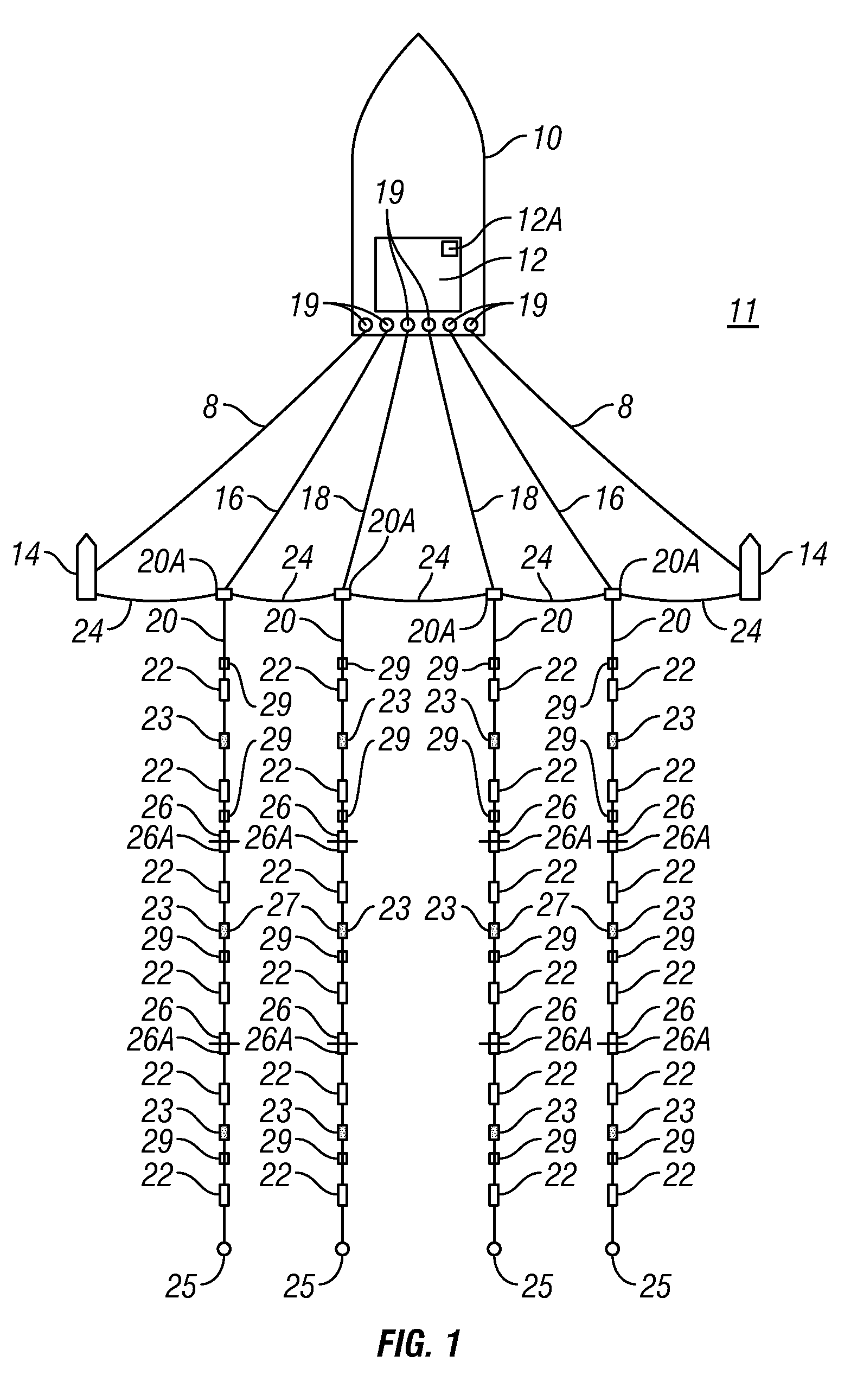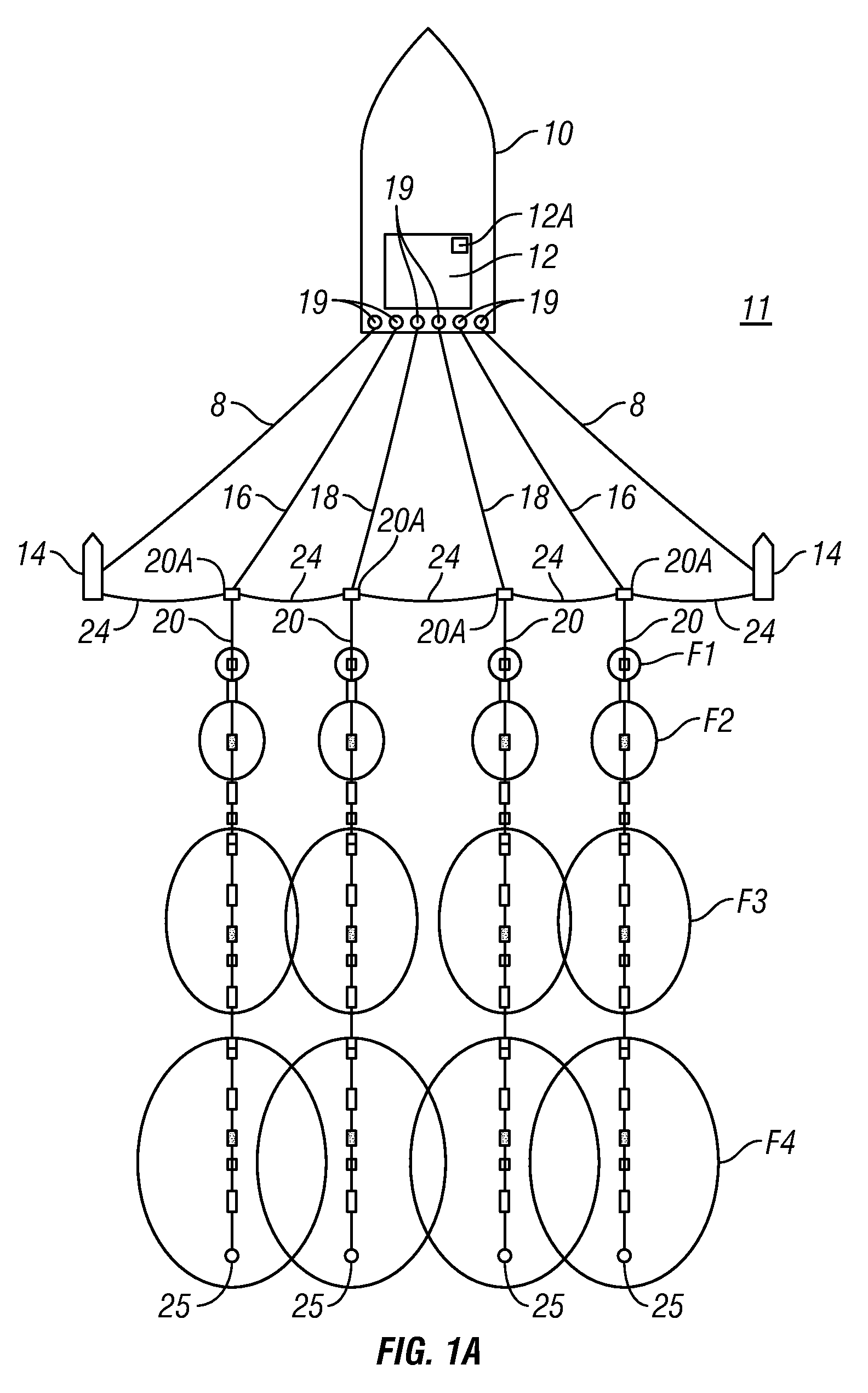Method for determining adequacy of seismic data coverage of a subsurface area being surveyed and its application to selecting sensor array geometry
a technology of seismic data and subsurface area, applied in the field of seismic surveying of the earths subsurface, can solve the problems of obscuring the geologic picture, amplitude distortion, particularly troublesome,
- Summary
- Abstract
- Description
- Claims
- Application Information
AI Technical Summary
Benefits of technology
Problems solved by technology
Method used
Image
Examples
Embodiment Construction
[0032]FIG. 1 shows a typical marine seismic survey system that can be used with various aspect of the present invention. The seismic survey system can include a survey vessel 10 that moves along the surface of a body of water 11 such as a lake or the ocean. The survey vessel 10 may include thereon electronic equipment, shown generally at 12 and for convenience collectively referred to as a “recording system.” The recording system 12 typically includes devices such as a data recording unit (not shown separately) for making a record with respect to time of signals generated by various sensors in the acquisition system. The recording system 12 also typically includes navigation equipment (not shown separately) to determine and record, at selected times, the geodetic position of the vessel 10, and using other devices to be explained below, each of a plurality of seismic sensors 22 disposed at spaced apart locations on streamers 20 towed by the survey vessel 10.
[0033]A device for determi...
PUM
 Login to View More
Login to View More Abstract
Description
Claims
Application Information
 Login to View More
Login to View More - R&D
- Intellectual Property
- Life Sciences
- Materials
- Tech Scout
- Unparalleled Data Quality
- Higher Quality Content
- 60% Fewer Hallucinations
Browse by: Latest US Patents, China's latest patents, Technical Efficacy Thesaurus, Application Domain, Technology Topic, Popular Technical Reports.
© 2025 PatSnap. All rights reserved.Legal|Privacy policy|Modern Slavery Act Transparency Statement|Sitemap|About US| Contact US: help@patsnap.com



